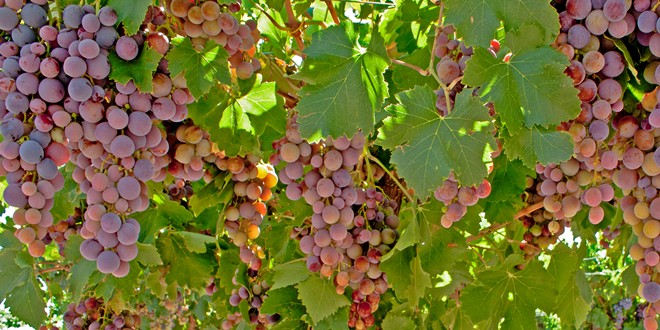Have you ever heard of Argentina’s Cereza grape variety or wines? Did you know that there’s almost as much Cereza planted in Argentina as there are vines in the whole of Burgundy? And yet hardly anyone has heard of the pink-skinned Cereza grape which is native to Argentina.
A guide to Argentine Cereza grape variety & wines
In some ways, Cereza is the ultimate Criolla grape — born of a cross between two of the first grapes to arrive on the continent, Moscatel de Alejandría and Listán Prieto (aka. Criolla Chica). Although it has existed in Argentina for centuries, Cereza was planted in unprecedented quantities in the 1980s. It comes second to Malbec in terms of hectares planted, but because of its high yields, Cereza is actually the number one grape variety harvested each year by volume, representing 20% of Argentina’s total production. We could call it the unsung hero of Argentine wine, but in order to do that we’d need to identify Cereza’s heroic qualities…
Strong? Yes. Cereza is an incredibly vigorous variety that grows well in dry conditions and can survive in even the more saline soils. Honest? Definitely. This almost-translucent, pink-skinned variety doesn’t pretend to offer wines of concentration or colour; the darkest shade you’ll get from it is a deep rosé and you can easily make white wine from Cereza. The grapes ripen unevenly on the bunch and so you can’t macerate Cereza for too long to bring out more colour, as you’ll get bitter notes. Cereza wines are made in a lighter style and pretty much taste like the grape itself, with light, juicy fruit and sometimes floral aromas.
Popular? Well, it has been. There were over 40,000 hectares of Cereza planted in Argentina during the 1980s, when it was adored by growers because of its generous yields. Its popularity is waning considerably though, and nowadays it is the grape variety losing most ground in Argentina, with vineyards being abandoned or replaced at a rapid rate. And you’ll almost never see Cereza written on a wine label.
So, not a hero then? That’s debatable. Cereza is still widely planted in Mendoza and San Juan (together they account for 95% of Argentina’s Cereza vines). It offers high yields and decent potential income for growers, in return for relatively low maintenance. Cereza is the main variety used in cheaper bulk wines and it is also used to make concentrated grape must and the base for Gancia vermouth (which locals drink with lemonade). It can also be eaten fresh as a table grape. Although it is by no means glamorous, Cereza is still big business. But, with local consumption dropping, the question is for how long?
In response to this hero’s waning popularity, a handful of winemakers are beginning to make fine wines from Cereza to try to restore its position on the dinner table and make people aware of the wealth of Criolla vines that still exist in Argentina before it is too late. My favourite Cereza wine is Cara Sucia, made by the Durigutti brothers: “We used to drink these wines growing up — there was always a litre-sized bottle on the table!” remembers Héctor Durigutti. “We want to return to our origins by drinking these easy-going wines, and get back to drinking 90 litres per capita a year!”
While it’s incredibly unlikely that any country will return to a consumption heyday of 90 litres a year, I do believe that Cereza offers an opportunity for Argentina to increase local consumption and get through its never-ending economic crises by making affordable and accessible easy-to-drink wines again. I’m certain Cereza will continue to lose its footing in plantations in the years to come, and probably in as dramatic a fashion as they appeared, but I hope it does remain part of Argentina’s wine story in the future. It can be a true hero as a vino del pueblo (village wine), and a rather inviting one at that. Let’s hope more winemakers take up the challenge.
This is an extract from our new book on South American wine… order your copy now!
Favourite Cereza wine producers
- Durigutti (Cara Sucia)
- Paso a Paso
- Lucas Niven
- Finca Las Payas
Quick facts about Cereza wines in Argentina
- Hectares planted: 26,388
- Key descriptors: Medium pink colour. Aromas of strawberries, grapes & blossom. Dry with soft tannins (low), soft acidity (low) and light body.
- Winemaking styles: Typically used for jug wines (white, rosé and red blends) but modern Cereza wines are youthful in style with no oak and modest levels of alcohol (12% – 13%). Usually blended.
Read more about the Criolla grape varieties and wines in South America with our Guide to Criolla wines
